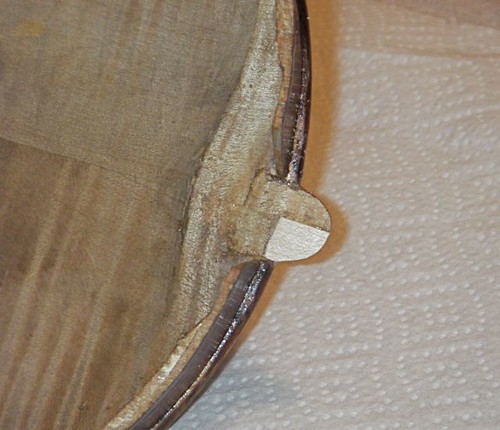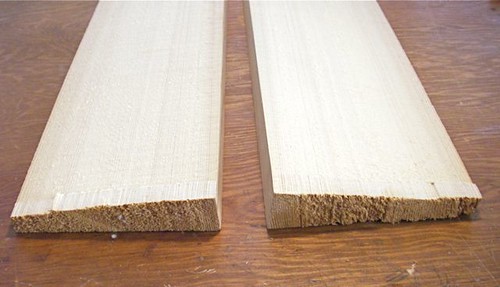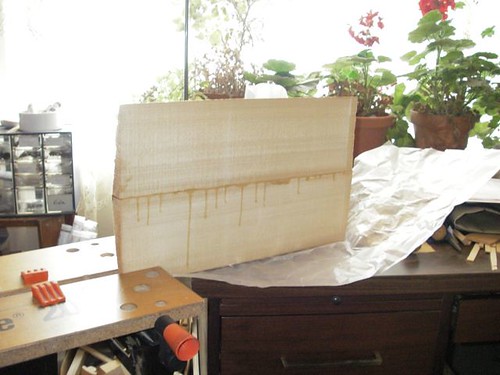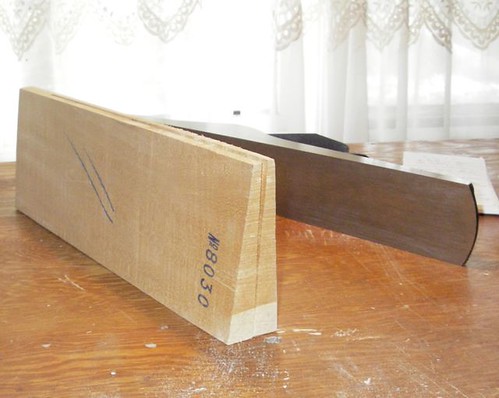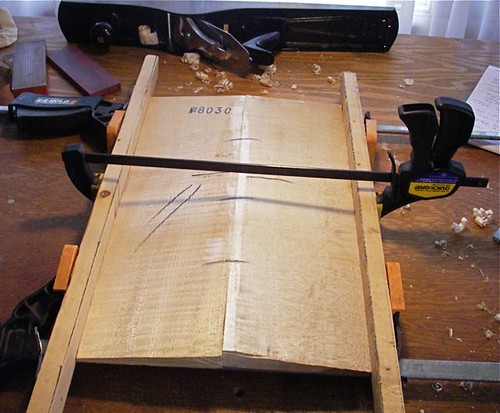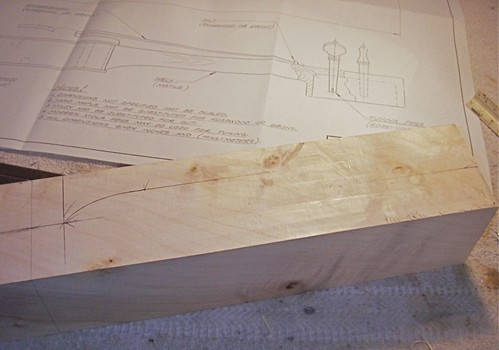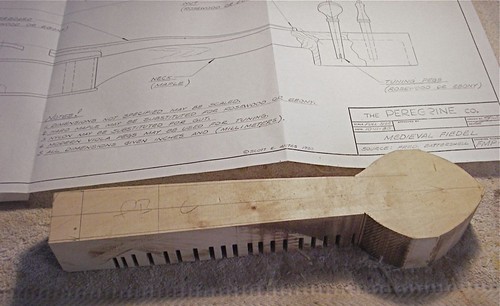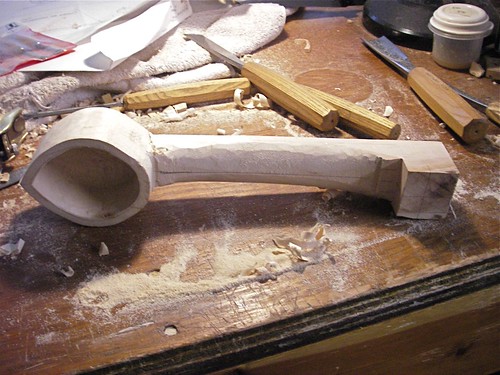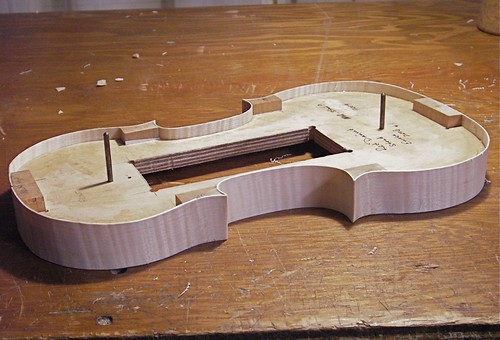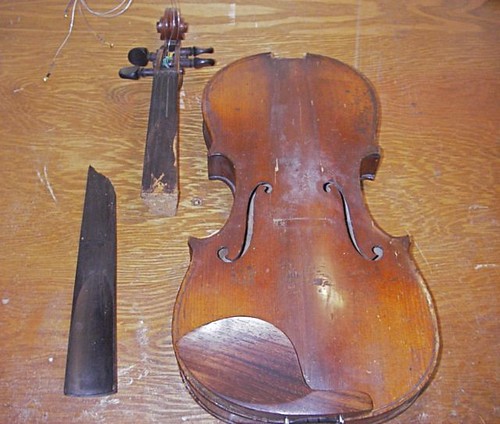
Here's the neck mortise and neck. It is an older fiddle that has been repaired probably several times over its life. You can note one of the top cracks running from the neck mortise down towards the bridge area. It's a light line you see startig about 1/3 in from the left side of the mortise.
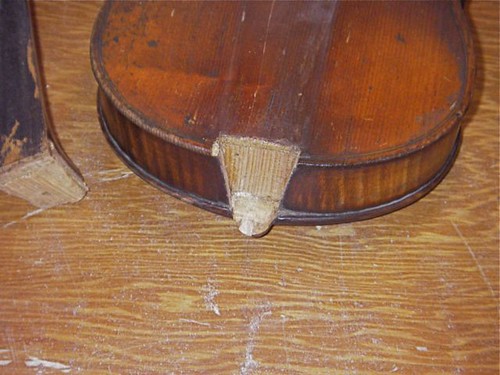
A side view of the neck after the fingerboard stub has been removed. Note the multiple bushings and re-drilling of pegholes in the pegbox.

I'm holding the neck in the mortise. Note the missing wood at the end of the button, also notice the fill (some sort of putty) where the button meets the edge. There's also a strange scribe line down the edge of the heel, just a bit out from the rib.* This neck root has a slab of wood added to the inside edge, to extend it out a bit, as well as the shim at the bottom that shows here. (* On later cleaning of old glue and debris, it turns out that these 'scribe lines' are actually the edge of a shim that has been added to each side of the neck. )
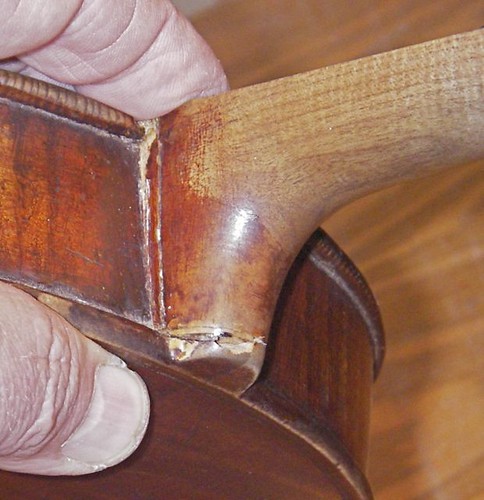
Using a palette knife to hold open the break in the neck block. This is actually an old break that had been glued back together. Time for a new block.

Out comes the block. Note the old repair label. I don't use them, myself. I will pencil in the year on some repairs, more for a way to monitor how something works over time. When I first started, the fellow who was directing me thought repair labels were a good idea, that one should do it, as a way of documenting what's happened to the fiddle. And I do admit they're interesting to see. But right now, they seem like grafitti to me -- not to mention you get blamed for all the bad repairs that might take place after it leaves your shop!
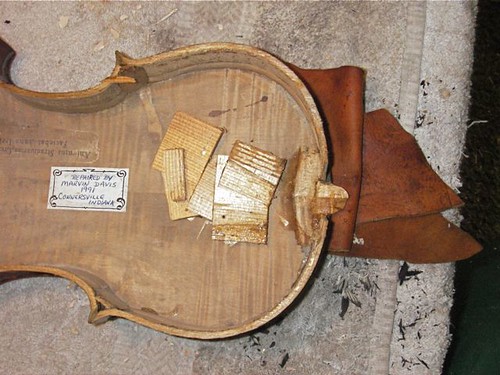
After removing old wood and putty, I fit a new piece of maple to the button.
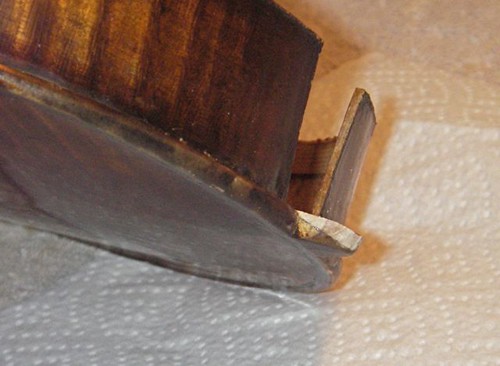
The new wood applied to the button damage; the edge is still a bit proud to be later fit to the installed neck-heel. Oddly, this plate has been previously chiseled out, perhaps to seat the neck -- very unusual. You can see the step-up edge just inside the rib line. One would like to keep the plate full thickness here, as it is a weak spot.
